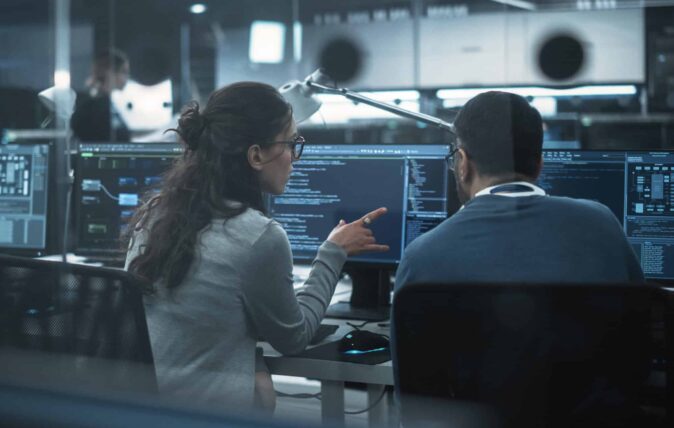Leading a Global Intelligence and Threat Analysis Program for One of the World’s Most Well-Known Brands

Angela Lewis, Manager of Global Intelligence and Threat Analysis for The Walt Disney Company and Protective Intelligence Honors Thought Leader, is tasked with the massive job of understanding how geopolitical events and global security intelligence could impact The Walt Disney Company’s various lines of business.
To do so she’s created one of the best protective intelligence teams in the business. One that she leads with encouraging a positive organizational culture, something Angela believes is key to the success of any security program. She is even nearing the completion of her PhD in Global Leadership from Pepperdine University; her dissertation focuses on building and leveraging intelligence teams in the private sector.
I recently had Angela join me on The Protective Intelligence Podcast for a fascinating discussion into the Walt Disney Global Intelligence and Threat Analysis program she runs. Here are some highlights from our conversation.
What were the main considerations you took into account when building out your team?
When I started building out my team, I had the luxury of already having been in the company for a few years, so I had a good feeling for the overarching needs of the business when it came to intelligence. So, that meant that it really came down to designing a strategy for meeting those needs and then identifying the right staffing, structure, and processes to support that strategy.
In reality, while building a team is heavily dependent on hiring the right talent, it also means ensuring that whatever structure you design supports that talent and allows them to grow and evolve along with your company’s needs – same with the processes and procedures that are implemented. I definitely took an agile approach to establish our team.
That said, our team also has a very nuanced remit, so while many organizations are looking at tactical incident monitoring and alerting; investigations related to problematic communicators, or social media threat intelligence, those elements reside within different parts of our organization. We are able to focus primarily on strategic geopolitical and global security intelligence – understanding how things happening around the globe may impact Disney’s various lines of business.
Developing tailored intelligence requirements – really understanding where to focus our efforts – also helped to identify the right talent to join our team and how to structure the team so as to best leverage individual and collective strengths.
What advice would you give a newly appointed director or manager of an intelligence team who has never done it before?
Do a needs assessment first! Many times, a new leader is brought in to build an intelligence capability – often from a government background – and sometimes, they’re handed a budget and some headcount, and they start with building the structure and then go about trying to figure out how to use that structure – or the people they’ve hired – to accomplish all of the things that their organization expects of them.
Scoping the work first – truly understanding what is needed – and why – will help to build an intelligence program more thoughtfully. It also helps to avoid some of the stumbles that many leaders face in building these teams. It’s not about what you as a manager or leader think the intelligence function should do, or even what other organizations within the private sector do – but rather what unique security threats exist to your particular company and how intelligence can best be brought to bear to help decision makers mitigate them.
At the end of the day, the intent of global security and intelligence is to help business decision-makers make the best possible decisions, and intelligence teams can’t do that if they don’t know what questions or problem set they’re targeting.
What is unique about the work culture of your team?
It would be easy for me to say something like “the gifs” (because my team can drop some perfectly-timed and completely on-point gifs like nobody else I know), but in reality, I’d have to say the camaraderie.
I know that I am 100% biased, so I won’t be offended if this is taken with a grain of salt – but I am immensely proud of the way the team just “gels”. We have a lot of different personalities on the team – some are shy or reserved while others are outspoken, some are passionate about Harry Potter while others are hardcore Disney fanatics (and still others have never even seen Frozen…), but the team shows up for each other. Whether it’s rooting each other on ahead of a briefing, helping provide peer review so a product is the best it can be, or just serving as a safe place to express frustrations before moving forward with the work that needs to be done. I think the reason the team is so effective is the culture that allows everyone to bring their unique slice of genius while also encouraging each other as we tackle our “areas for growth.” At the end of the day, we are a team, but our individuality is recognized and celebrated, too.
The analysts on your team have a wide range of backgrounds – how do you approach recruiting and mentoring?
In my time as the manager of my team, I have hired a total of 9 (going on 10) analysts, and I am batting 1000, which feels really good. Every single one of my analysts has been the absolute perfect pick for their role. I don’t typically approach hiring by looking for a specific background – I’m not even necessarily looking for analytic experience. What I am looking for is intellectual curiosity, someone who wants to learn and grow, who is adaptable, flexible, and agile, and who is a great team member. And yes, solid writing skills.
To be honest, though, I think this success has been only partially because the right people were selected – it’s also because of the camaraderie on the team, which I mentioned previously. They work hard for each other – and that means that every time we onboard someone new, it’s a team effort. Each person on the team contributes to bringing the newest person up to speed, helping them get acclimated, and ensuring that they’re fully integrated into the team. Every person on my team is a mentor because they have unique strengths that we can all learn from. I may be there to serve as a sounding board or to give suggestions or guidance or even career advice, but I’m not the only leader on my team – each member of the team is contributing to everyone else’s growth and development every day.
How does your team evaluate the unique threat landscape?
From a bigger picture perspective, our lens is a Disney global security lens – for us, that means seeing what’s happening around the world through the eyes of Disney Cruise Lines, ABC News, Marvel, Pixar, ESPN, National Geographic, etc.
It also means seeing the challenges of current events through the eyes of individual cast members, guests, and business decision-makers. To do this, we have to rely heavily on a very collaborative approach. We work with vendors, regionally-based partners, our professional networks, and fellow cast members so that we can have the most holistic view of the threat landscape. We also nuance our analysis for individual lines of business. This means that no two days are ever the same – and nor are any two products – so it certainly keeps things interesting, but it also allows for a more creative and flexible approach to global intelligence and threat analysis.
What makes up a protective intelligence program, exactly? Download The Definitive Guide to Establishing a Modern Protective Intelligence Program to learn about the individual components as they apply to the six core elements of the intelligence cycle.






